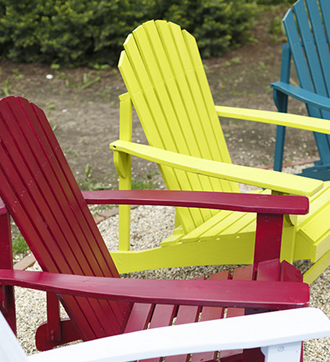Dusting
The best technique is shockingly clear: utilizing a build up free fabric or duster, essentially clean your painted furniture off. In addition to the fact that this keeps the shading looking new and new, it likewise keeps earth and residue from gathering on a superficial level which, whenever left to settle, will require progressively vivacious cleaning. Rehash this as frequently as could be expected under the circumstances, sensibly speaking – the cleaner you can keep your painted furnishings, the more it will remain in an ideal condition.
 Standard Cleaning
Standard Cleaning Minor stains and softly dirty zones are effectively cleaned: blend a limited quantity of cleaning up fluid or cleanser (we suggest utilizing a cleanser meant as 'mellow' or 'kind to hands' as this will be more PH nonpartisan) with warm water. Utilizing a clammy material, wipe your painted furnishings, guaranteeing you take additional consideration with the especially grimy zones. When it has been cleaned, wash the thing with new, clean water to evacuate any synthetic concoctions or cleanser buildup that might be left. Quickly dry with a build up free material to forestall fluid laying on a superficial level and causing recoloring or other harm.
Repainting
Little regions of your painted furniture may dull in shading because of different factors, for example, age, general utilize and dreary cleaning. If so, including a light layer of paint to correct the shading will revitalize them and look all around great.
The most effective method to keep stains from returning
There are various estimates you can take to keep stains from returning, including the accompanying:
In the event that hot, wet or messy things are frequently positioned on a painted surface, ensure you use mats, napkins, trivets, or dragsters to forestall direct contact with the timber.
Any spilled fluid ought to be cleaned up right away. A similar exhortation applies to food and different solids that could leave sleek or oily checks on a superficial level.
Things to maintain a strategic distance from
We don't suggest utilizing some other cleaning arrangements than those referenced previously. This is on the grounds that such arrangements can recolor the paint of the timber underneath it, making harm your furnishings. Besides, abstain from cleaning frill, for example, metal scourers as these will leave scratches in the paint. Before cleaning, you ought to consistently wipe over your furniture with a spotless and dry material to evacuate whatever might be perched on a superficial level (as such buildup could scratch your furniture during the cleaning procedure).
Wood development
Wood is a characteristic item. All things considered, it can grow and contract with variety in room temperature and air mugginess, and may move after some time. As an immaculate item this doesn't cause any issues, and little parts or holes between joins just add to the wood's character – it is anything but a flaw. At the point when painted, wood's development can be emphasizd further.





